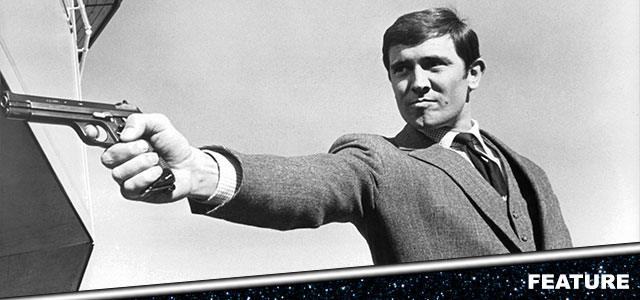
The 25th James Bond movie No Time To Die, starring Daniel Craig, may have come and gone. However, the mythology and appeal of 007 endures.
To celebrate the franchise's 60th anniversary, we're thrilled to be bringing back every James Bond movie in order to selected Cineworld cinemas nationwide.
So, grab a martini, dust down that suit jacket and join us as we recap all of the James Bond movies in order of release, from Dr No to No Time To Die. Today's film:
What is the story of On Her Majesty's Secret Service?
British MI6 agent James Bond/007 (George Lazenby) saves the troubled Countessa Teresa 'Tracy' di Vicenzo (Diana Rigg) from suicide. As a result, her estranged father, Marc-Ange Draco (Gabriele Ferzetti), the head of a major European crime syndicate, meets with Bond and encourages the two of them to get to know each other.
Ever the perennial bachelor, Bond is initially reluctant, but eventually falls in love with Tracy. However, the romance is interrupted when 007 discovers the location of his nemesis Blofeld (Telly Savalas) in the Swiss Alps. In the guise of a genealogist, Bond travels to his enemy's mountain hideaway, Piz Gloria, where he uncovers a deadly plot to unleash a viral pathogen upon the world.
How did On Her Majesty's Secret Service get made?
Until 1969, the hugely successful James Bond franchise had largely proceeded on course. The big screen incarnation of Ian Fleming's super spy came courtesy of Sean Connery, whose rugged charm and latent air of macho violence nailed the qualities of the author's creation. Connery first took up the mantle in 1962's Dr No, scored a massive critical and box office hit with 1963's From Russia With Love, and delivered what is arguably the definitive Bond portrayal in 1964's Goldfinger.
However, from 1965's Thunderball onwards, there were signs of discontent in the Bond camp. Connery was tiring of the press intrusion and subsequently shied away from media interviews. This, coupled with a frenzied mobbing from fans while promoting 1967's You Only Live Twice in Japan, marked the nail in the coffin of his Bond tenure – albeit briefly. Desiring to stretch himself beyond the role of 007, Connery agreed with producers Albert R. 'Cubby' Broccoli and Harry Saltzman that he would quit as James Bond.
This left the producers in a quandary: how to follow an actor who had so singularly put their stamp on the role? This was the first splintering in the Bond franchise, the first moment where the baton would be handed from one star to another, a trend that has continued to this day. It no doubt crafts continuity problems but also, intriguingly, allows actors of different backgrounds and abilities to invest the role with their own personality.
Following Connery's resignation, the plan was to adapt Fleming's novel The Man With the Golden Gun, to be filmed on location in Cambodia with Roger Moore in the role as Bond. However the location was deemed unsafe and Moore instead returning to his successful TV series The Saint. (Moore would take over the role in 1973's Live and Let Die, and The Man With the Golden Gun would eventually be made in 1974.)
In a complete about-face from Connery, it was decided that Bond would now be portrayed by Australian George Lazenby. A complete unknown, Lazenby was a male model whose most significant appearance had been in a Fry's chocolate commercial. There was little in his back catalogue to suggest suitability for the world's greatest secret agent – indeed, he beat actors John Richardson, Dutchman Hans De Vries, Australian Robert Campbell and Englishman Anthony Rogers to the part.
Broccoli cited Lazenby's impressive physique as the thing that clinched him the role. The producer was further impressed when Lazenby accidentally broke the nose of a stunt co-ordinator – this convinced Broccoli the actor could handle himself in the fight scenes. However, his acting skills were distinctly lacking, so Lazenby was put in the hands of Peter Hunt, a veteran Bond editor who won the gig to make On Her Majesty's Secret Service after being turned down to helm You Only Live Twice.
Hunt later broke down the specifics of his working relationship with Lazenby. He encouraged the actor to stay away from the cast and crew to better assimilate Bond'd mindset, and allegedly only spoke to him through an assistant. When it came to shooting Tracey's death scene, Hunt planned a day's worth of rehearsals, claiming, "I broke him down until he was absolutely exhausted, and by the time we shot it at five o'clock, he was exhausted, and that's how I got the performance".
With the new actor in place, the script had to be defined. Broccoli and Saltzman enlisted Richard Maibaum, who had contributed scripts for all of the previous Bond movies except for You Only Live Twice. (That was undertaken by esteemed author Roald Dahl.) At Broccoli and Saltzman's request, the screenplay was to ditch the gadgets and outlandish aspects, returning to the more plausible approach of From Russia With Love. The plan was to be as faithful to Fleming's source novel as possible, with Maibaum later describing the script as "marvellous", although he doubted Lazenby's abilities.
Given the continuity issues surrounding a new Bond actor, the script interwove a number of in-jokes referring to Connery's portrayal. This includes Lazenby's line "this never happened to the other fella" in the opening scene, and the scene where Bond returns to his office to discover gadgets from the previous movies. That doesn't, however, explain the inability of Blofeld to recognise Bond, given he met him in You Only Live Twice – after all, Bond is only disguised in the glasses and posh accent of genealogist Sir Hilary Bray. (It was originally planned that Bond would undergo plastic surgery, although this idea was ditched.)
On the subject of Blofeld, there was more continuity disruption. Donald Pleasance had eerily portrayed the nefarious SPECTRE leader in You Only Twice, lurking within his secret volcano base. However, the part as written in Majesty's was considerably more physical, and so fell to American actor Telly Savalas (later famous for detective series Kojack), who could more convincingly engage Lazenby in a fight.
After Brigitte Bardot backed out, Britain's Diana Rigg was cast as Tracey off the back of her popular appearance as agent Emma Peel in The Avengers (the TV show, that is). She fashions one of the best female characters in the Bond canon – no winsome foil to the masculine 007, she is in every way his physical and emotional equal, to the extent that she tames his bachelor heart and ultimately compels him to marry.
She also saves his life during the car chase sequence with Blofeld's goons, and handles herself against Blofeld's henchman Grunther (Yori Borienko) during the climactic assault on Piz Gloria. Yet never does the writing of Tracey's character feel tokenistic or heavy-handed: she is simply an organic creation, the likes of which we've seen only infrequently in the Bond universe.
Nevertheless, relations between the inexperienced Lazenby and the relatively more seasoned Rigg were said to be fractious. When Rigg directed a joke towards Lazenby about eating garlic before shooting a love scene, it wasn't clear if there was genuine malice underneath. Lazenby would later recall arguing with his co-star about her drinking champagne with Hunt while the crew were left standing in the freezing snow, ultimately reasoning, "I think everyone gets upset at one time".
Yet despite Lazenby's bluster and lack of tact, it's important to remember his scenes with longstanding Bond actors Bernard Lee (M) and Lois Maxwell (Moneypenny). In truth, these scenes resonate with far more emotional resonance than their relatively flippant counterparts in the Connery movies, as Bond attempts to angrily resign from MI6 before an intervention from Moneypenny saves the day. Lazenby's terse scenes with Lee are later contrasted with a lovely moment where M's secret hobby, scientifically investigating moths and butterflies, is revealed.
If Majesty's has emotional impact on its side, it also boasts one of the greatest Bond locations. The wind-blasted mountain top location of Piz Gloria is where Blofeld is manufacturing a deadly virus, designed to be spread by a group of brainwashed young women unless his demands are met. In reality, Blofeld's base was a restaurant under construction at the top of Schilthorn in the Bernese Alps. Captivated by the location, the crew agreed to install electricity and a working ski lift themselves, and the restaurant still exists today, drinking in the astonishing view while rotating on its own axis.
Additional filming took place across Switzerland in Lauterbrunnen, Bern and Grindelwald, with interiors being lensed at Bond's spiritual home of Pinewood Studios. Hunt's facility with sharp editing and staging comes into its own during the many snowbound action sequences, particularly the thrilling car chase that culminates in a stock car pile-up. For these sequences, Hunt enlisted the help of second unit director John Glen, who would later helm all the Bond movies from 1981's For Your Eyes Only to 1989's Licence to Kill.
Of course, Majesty's saves its real sucker-punch until the end, the only Bond movie to end on a commendably downbeat note. Bond's marriage and subsequent inability to save Tracey from murder humanises the character in a manner that would influence later films such as Licence to Kill, Casino Royale (2006) and Skyfall (2012), reminding us of the human vulnerabilities behind the tough exterior.
READ MORE
- No Time To Die and the 6 James Bond movies we never got to see
- 7 actors who could play James Bond after Daniel Craig retires
- Shaken and stirred! Daniel Craig's defining 007 moments
What music is on the On Her Majesty's Secret Service soundtrack?
John Barry delivered what is arguably his greatest Bond score for On Her Majesty's Secret Service. For the first time since From Russia With Love, the opening credit sequence was accompanied by an instrumental piece, rather than a song – reportedly, this is because Majesty's lengthy title was impossible to fit into a rhyming lyric.
However, necessity is the mother of invention: Barry was the sole author of the music in the sixth Bond movie, not having to share the spotlight with a famous pop artist, and he brought all manner of innovative flourishes to the soundtrack.
It all begins with that aforementioned opening credits piece. From the sensual, growling brass undercurrent to the then-groundbreaking incorporation of the Moog synthesiser, Barry proved that one doesn't need lyrics in order to assert 007's sexual charisma or prowess at killing. If there's a better example of a Bond cue that gets under the skin of the main character, we're yet to hear it.
As with all his Bond scores, Barry is steadfastly loyal to the theme throughout the remainder of the soundtrack. This gives the music a consistent identity, locating Bond's animal magnetism and heroism in the midst of several important set-pieces, including the thrilling ski chase cue 'Escape from Piz Gloria'. The instrumental nuances surrounding the theme, from the tingling triangle to the undulating xylophones, are emblematic of Barry's work throughout the series.
These stylistics are reprised during the exciting finale, 'Battle at Piz Gloria', as Barry really opens the brass taps during the showdown between Bond and Blofeld.
Yet the striking main theme is just one part of the score's rich tapestry. The other, perhaps more famous, element is the song 'We Have All The Time in the World', the gorgeous melody for which doubles as the Bond/Tracy love theme. It was the final song performed by jazz legend Louis Armstrong, who died not long after completing recording, and one can hear the fragile weight in his voice – those unmistakeable vocals foreshadow the tragedy to come at the end of the movie.
Barry again demonstrates his remarkable ability to adapt a song into underscore cues of enormous beauty. This includes the swooning 'Medley' at the end of the movie, the theme resolving itself as Bond consigns himself to his greatest heartbreak. The piece is even treated to a swooning lounge jazz arrangement that honours Barry's background as a jazz artist.
There are several other standalone cues of compositional excellence. First among equals is the nail-chewing suspense of 'Gumbold's Safe', a fabulous example of how to build layers of orchestral menace including timpani, brooding French horns and pensive strings. It transforms a simple safe-cracking scene into a memorable moment of high anxiety – another fine example of why nobody did it better than John Barry.
How was On Her Majesty's Secret Service received?
It was always going to be difficult following in Sean Connery's footsteps, and indeed the initial response to Lazenby's Bond debut was somewhat muted. Writing in The Guardian, Derek Malcolm said Lazenby "is not a good actor and though I never thought Sean Connery was all that stylish either, there are moments when one yearns for a little of his louche panache".
Nevertheless, the movie was a box office success, particularly in light of the unknown lead actor. Against a $7 million budget, the movie grossed $82 million worldwide, considerably less than You Only Live Twice, but profitable enough to suggest that Lazenby had a future as the character.
Sadly, it wasn't to be. Speaking with his manager Ronan O'Rahilly (oddly enough the founder of pirate radio station Radio Caroline), Lazenby was persuaded that Bond would become a dinosaur in the days of the hippy movement and flower power.
For that reason, under the belief that stardom awaited him elsewhere, Lazenby agreed to make only one film as 007, despite the fact that a lucrative seven-movie contract was offered. This dismissal of Bond seemed to extend to Lazenby's conduct at the world premiere in December 1969, turning up with a beard and long hair that suggested the antithesis of an actor portraying the suave 007.
Lazenby's decision created complications with both merchandising and audience identification. Because he would be gone after the film's release, it was impractical to work his image into tie-in products; several posters also declined to use his image, instead favouring a silhouette. And audiences were therefore denied their chance to see the actor assert his stamp on the super-spy. This is a shame as, during the final moments where Bond is cradling Tracey's body, Lazenby suggests raw, tender depths that could have been explored in future movies.
Nevertheless, in recent years, On Her Majesty's Secret Service has been re-assessed as one of the best movies in the Bond series, the rare film that boasts emotional depth and character development, rather than trotting out the same old cliches. And Lazenby has also started to receive a more favourable reception from contemporary critics.
Journalist Danny Peary wrote: "I'm not sure I agree with those who insist that if Connery had played Bond it would definitely be the best of the entire Bond series ... Connery's Bond, with his boundless humor and sense of fun and self-confidence, would be out of place in this picture. It actually works better with Lazenby because he is incapable of playing Bond as a bigger-than-life hero; for one thing he hasn't the looks ...
"Lazenby's Bond also hasn't the assurance of Connery's Bond and that is appropriate in the crumbling, depressing world he finds himself. He seems vulnerable and jittery at times. At the skating rink, he is actually scared. We worry about him ... On Her Majesty's Secret Service doesn't have Connery and it's impossible to ever fully adjust to Lazenby, but I think that it still might be the best Bond film, as many Bond cultists claim."
At the time, however, having replaced Sean Connery once already, producers Broccoli and Saltzman were now back to square one. Who would play 007 in the next movie, and, crucially, would they stick around for a suitable length of time? In order to paper over the controversy with Lazenby, they took a step back and once again sought the services of the estimable Connery himself...
What was the next movie in the James Bond series?
Diamonds Are Forever was the next Bond movie, released in 1971.
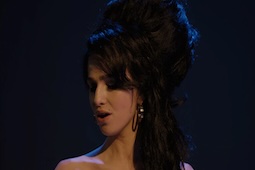
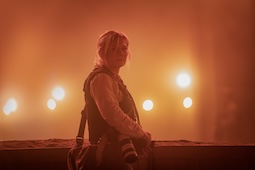
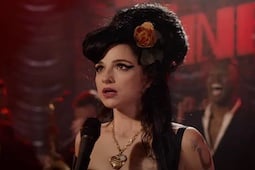
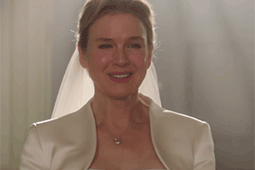

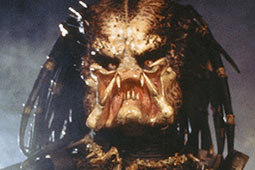
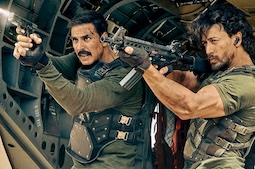
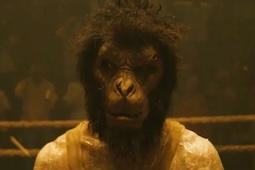
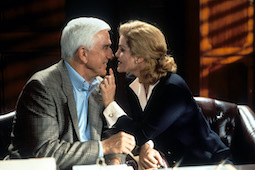
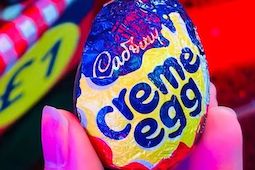
.jpg)


.jpg)
.png)






